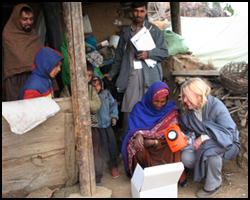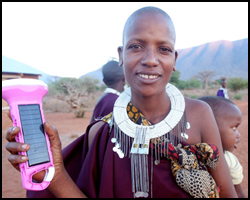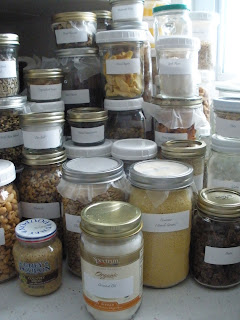On 5 Kids and a Dog, there’s a series called the ABCs of Homeschooling. This week’s letter is “K.”

…is for Kitchen.
When I think of homeschooling, one of the places that we spend a considerable amount of time in is the kitchen. The girls and I enjoy cooking and baking, so incorporating a culinary aspect into homeschooling is a natural fit.
The girls have been helping in the kitchen since they were about 18 months old. As they have gotten older, the new skills they learn match their developmental and physical abilities.
Both Sophia and Olivia will look at recipes as I’m planning meals for the upcoming few weeks. When I’m doing this, they often will look at the pictures that accompany the recipe (the majority of my recipes come from cooking and women’s magazines). They’ll see a picture of something that looks good and will ask if they can make it.
Trying a new recipe, having it be a part of the meal, and seeing what it tastes like is something that makes the girls happy and proud.
Olivia holding a pumpkin pie she made.
During the past few years, I created an ABC Journey Around the World in which the girls learned about a different country in alphabetical order (e.g., Australia, Brazil, China, Denmark, Egypt, France, and so forth until ending with Yemen and Zambia).
One of their favorite parts of learning about other countries was seeing what people would eat in different parts of the world. I found recipes on the internet as well as through recipe books from the library. We tried anywhere from one to six recipes per country (some were easier to find recipes for than others).
The girls made Mexican hot chocolate
using a recipe found in a children’s cookbook.
They also made Mexican scrambled eggs
that morning for a complete breakfast.
Sophia is holding a green bean sidedish
using a French recipe.
Olivia is making Swedish cinnamon rolls.
The recipe came from a local church cookbook
that had a whole section on Swedish cooking
(we live in a community that was founded
by Swedish immigrants).
The kitchen is more than a place to cook and bake food. With homeschooling, the kitchen also becomes an area to do science experiments and hands-on activities.
One of the science lessons that the girls did focused on marine life and pelicans. Apparently a pelican can hold 13 1/2 quarts of water in its pouch. The water drains out, leaving only the fish which the pelican then can swallow and eat.
Sophia trying to catch a marshmallow
as part of a science lesson about pelicans.
In the photograph above, there are 2 marshmallows in the sink representing fish. Sophia’s job is to catch the marshmallows. It’s harder than it looks.
The girls learn best when they can make a hands-on, tangible connection with the subject about which they are learning. This is so important when the concept might be more difficult for them (e.g., electricity) or would benefit from a visual example (e.g., lung capacity).
Olivia learning about lung capacity.
She took a deep breath and then blew air through the tube
that led into the water-filled 2-liter pop bottle.
The air would push out the water from the bottle
and show how much air was in her lungs.
Sometimes when we’re cooking, the girls learn new words or make a connection between what they’re cooking with something else they’ve heard or learned. For example, when we were making cheese, the curds separated from the whey. They immediately made the connection with the nursery rhyme they had heard many times:
Little Miss Muffet sat on a tuffet
Eating her curds and whey,
Along came a spider,
Who sat down beside her
And frightened Miss Muffet away.
Learning to make cheese. In the process,
the girls saw the curds and whey separate; and
made the connection of a nursery rhyme they heard.
(The curds are the white part; the whey is the liquid.)
For one nature study, we focused on learning about dandelions. In addition to the science part of the study, we added a culinary component where we made dandelion cookies, dandelion vinegar, and dandelion oil/salve.
Olivia making dandelion oil.
The oil can be used as a base to make salve.
The kitchen also is a place where the girls create things for the holidays and different seasons.
Sophia making borax snowflakes.
Olivia holding homemade marshmallows
she made for Valentine’s Day.
Sophina carving a pumpkin while Gretel looks on.
An important part of our time in the kitchen is when we make food to help others. We have made many meals and desserts for people experiencing medical/health challenges; and have chosen to donate some of our food to those in need.
The girls packaging up some of food to donate
to an organization that serves people who are homeless.
We also make food for animals – treats for the dogs, cats, and horses; and for wildlife. Making food for the hummingbirds to drink during the summer and suet for the birds during the winter are regular activities.
Sophia making suet for the birds on a
very cold 25 degree BELOW zero day.
Needless to say, the birds needed the energy
and were constantly eating the homemade suet.
Seeing how excited the animals are to get a treat…and to see the variety of birds that now visit the feeders is a lot of fun. Being able to observe animals up close (especially birds) is such a highlight of homeschooling.
So many subjects are covered in the kitchen beyond home economics – reading, math, science, community service, and geography. The kitchen truly is one of the centers of learning for homeschooling…and one of our favorite places to learn!
Read Full Post »



























